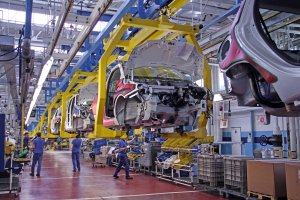The current crisis is the culmination of a process of integration that has profoundly changed the structure of each member state, their inter-relations and their power relations. One of its side effects was the rediscovery of the terms ‘centre’ and ‘periphery’ to analyse the economic situations of the European countries.
In order to understand where we are heading it is important to understand how we got where we are now. In trying to provide an answer to the current crisis we must look beyond the short-run, analysing the different trajectories of the peripheral and core countries in terms of the interdependence between economies with different productive capabilities. The study of the evolution of the centre-periphery relations may help towards an understanding of the dynamics of the European integration processes of the second half of the 20th century, based on both their chronology and the processes of geographical redistribution of international production. As the Italian philosopher Giambattista Vico observed (Vico, 2011 [1725–28]: 61), chronology and geography are the ‘two eyes of history’. As far as chronology is concerned, it should be recalled that all the countries of the Southern European periphery can be defined as latecomers, though Italy embarked on a path of industrialization and integration into European trade earlier than any of the other peripheral countries. As for geography, the changing geographies of production are contingent outcomes of the co-evolution of the asymmetric power relationships between individual and collective actors and institutions.
We need to bear in mind the background against which this co-evolution occurred, namely European integration of the peripheral countries (Europeanization) and globalization. As from the beginning of the 1970s, the countries of Europe were caught up between two different levels of deregulation, global and European. At the global level, the growing importance of the financial sector affected the rate and quality of growth of the capitalist economies, which moved from the two engines represented by investment and exports to the single engine of exports, occasionally complemented by consumption booms. Europeanization can be interpreted as EU-wide application of a policy of deregulation of goods and capital similar to the Anglo-Saxon model. Deregulation of labour markets and financialisation affected the timing, shape and direction of the European integration process. The interweaving between globalization and Europeanization represents the particular way the globalization process, which originated in the US, was translated into Europe through the formation of the European Union and the Monetary Union. The US neo-liberal model, intermediated by European construction, institutions and norms designed in conformity with the German model, has modelled the structure and affected the functioning of the peripheral economies, substantially weakening their resilience.
An analysis of the main phases of the development of the European countries since the second post-war period provides evidence of considerable differences in the productive structures of the countries of the centre and the southern periphery of Europe at the start of the Europeanization process. These differences entailed the asymmetric capacity of countries at differing levels of development to adjust to external shocks. When joining the euro, the member states relinquished their national management tools. The single currency was formed without creating any supra-national governance to take their place. Moreover, the entire institutional architecture of the Monetary Union was based on the assumption that the countries that met the Maastricht criteria for accession were all on a level playing field. Convergence was interpreted with reference to financial rather than real indicators, and it was believed that any problem encountered could and would be addressed in time (neo-functionalism). Thus, the construction of the European institutions was disembedded from the specific social and political institutions that provide a solid and durable foundation for any monetary union, and with no consideration for the different levels of development of its members. Insufficient political cohesion and misguided economic theory played a role in shaping what was pre-eminently a political project. The crisis made it evident that this institutional structure was not sustainable.
The interaction between these various factors reshaped the economic and geopolitical relations between the European economies. German reunification and collapse of the Soviet Union opened the way to Eastern enlargement, and to a geographical reorganization of production at the European level. Germany’s economic weight in Europe increased correspondingly. New peripheries came to the fore, while, with the weakening of the French economy, the core showed signs of internal fragmentation.
The outbreak of the crisis and its unequal consequences must be interpreted against this background. Mistakenly interpreted as a standard fiscal/balance of payments problem, the crisis was the final effect of a path of unequal development that the interaction between the international financial crisis and the incomplete nature of the European institutions has finally exposed. A longer-term perspective helps us better to assess the limitations of the solely macroeconomic alternatives that have been proposed to steer the EZ economy out of its present quagmire. While austerity and internal devaluation in the deficit (Southern European) countries has shown its destructive potential, expansion of internal demand in the ‘core’ countries (Germany) or unqualified Eurozone-wide reflationary measures, though indispensable, do not get to the root of the development and debt sustainability problems of Southern European countries, which continue to lack a sufficiently broad and differentiated productive structure. The problems associated with the structural rigidity of peripheral economies depend on their limited ability to operate in a regime where innovation and product-led innovation prevail, and not on scant labour flexibility.



